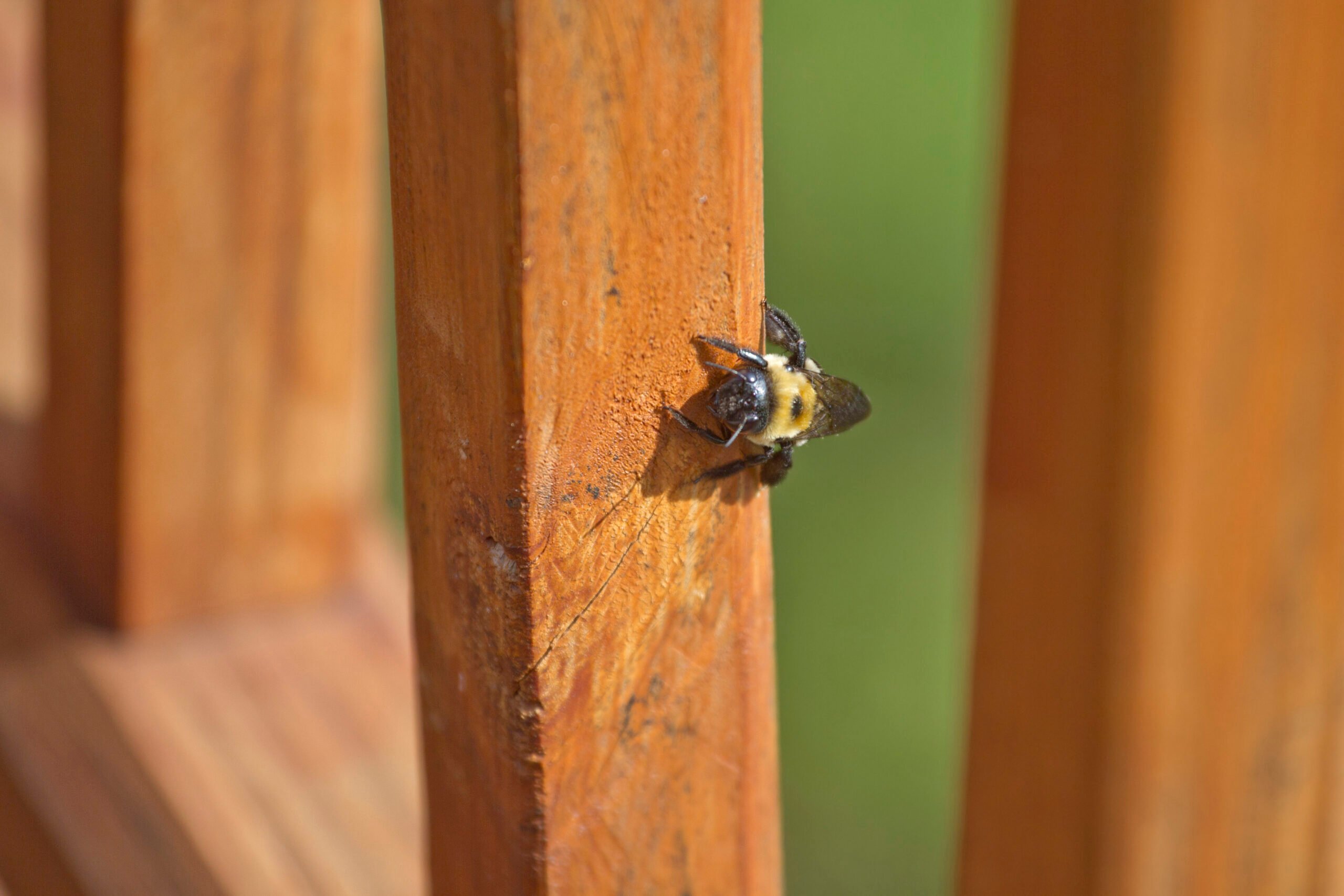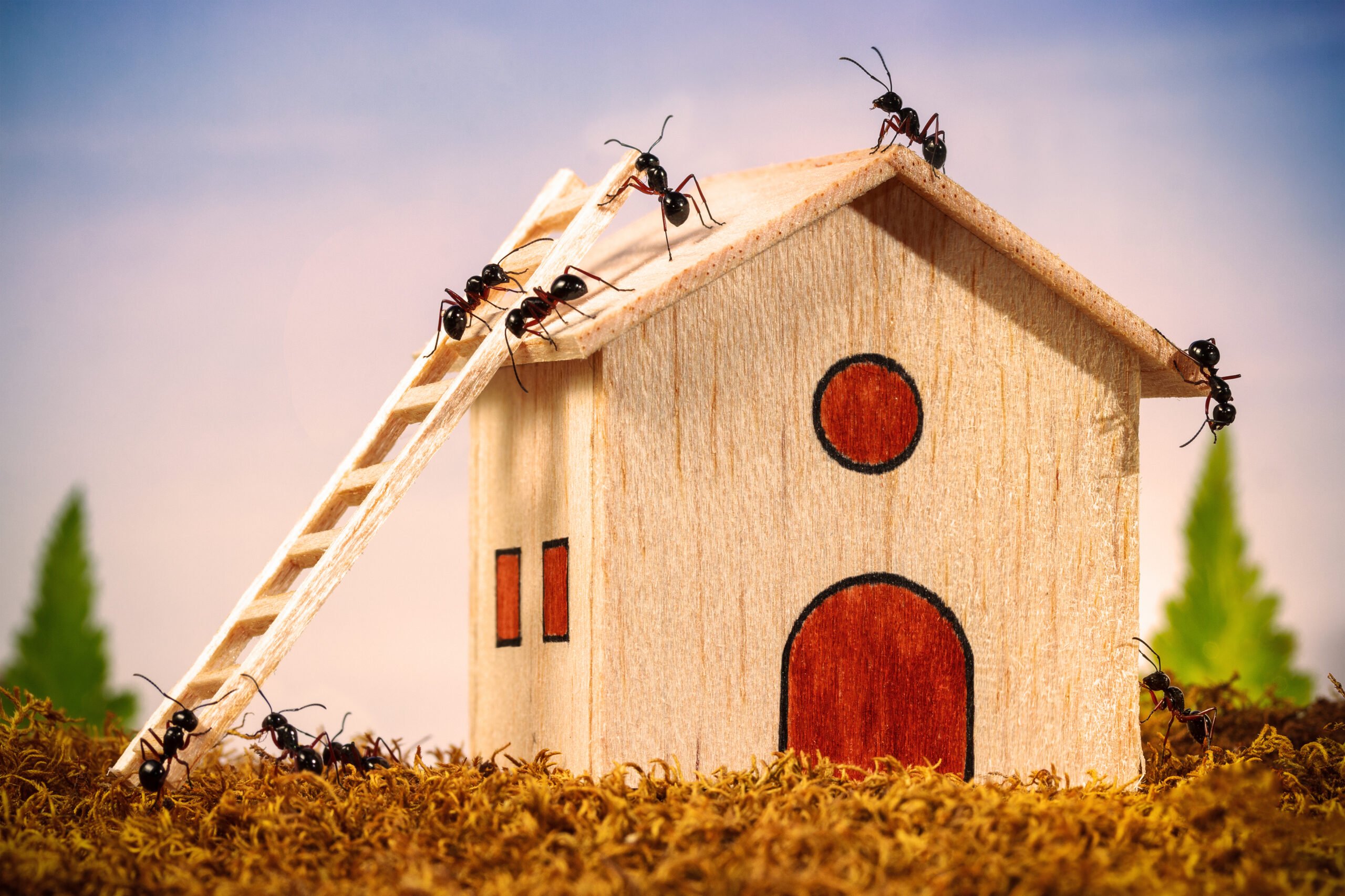As the weather warms up and we welcome the joys of spring in Northern Ohio and Southeast Michigan, homeowners may start to notice some unexpected guests around their homes, carpenter bees. These large, buzzing insects can be mistaken for bumblebees due to their similar size and appearance; however, unlike their more docile counterparts, carpenter bees could be damaging your home, and understanding how to spot the signs of damage is crucial to keeping your property safe.
What Are Carpenter Bees?
Carpenter bees are large, solitary bees that burrow into wood to create nests. They are typically black and yellow, similar to bumblebees, but with a shiny, hairless abdomen. While carpenter bees are not aggressive and will rarely sting, their nesting habits can pose significant threats to wooden structures. These bees are most active in the spring and summer, especially during late April when they emerge from hibernation. Their nesting sites are often seen around decks, eaves, and fascia boards, where untreated wood is abundant.
Are Carpenter Bees Dangerous to My Home?
You may be wondering, “Are carpenter bees dangerous to my home?” While carpenter bees are not harmful to humans directly, the damage they cause to your home can be costly. Carpenter bees bore perfectly round holes, usually around ½ inch in diameter, into wood surfaces to create tunnels where they lay their eggs. Over time, these tunnels can weaken the structural integrity of your home, leading to costly repairs. Additionally, carpenter bee damage can attract other pests, such as termites, which can further damage your property.
Key Signs of Carpenter Bee Damage
Knowing how to spot the signs that carpenter bees could be damaging your home is essential for preventing further destruction. Look for these telltale signs:
- Small Holes in Wood: One of the first signs you may notice is small, round holes in wooden surfaces around your home. These holes are typically about the size of a pencil eraser and are the entrance points to the bees’ tunnels.
- Wood Shavings: Carpenter bees push out sawdust-like debris, often seen around the holes. This is a clear indication that they are burrowing into the wood.
- Visible Bee Activity: Carpenter bees are often seen hovering around their nesting sites. If you notice large bees frequently circling or resting on wooden surfaces near your home, it’s a good indication that they may be nesting nearby.
- Damaged Wood: Over time, carpenter bee tunneling can weaken the wood, making it soft or easily breakable. If the wood around the holes feels fragile or begins to crumble, your home may be at significant risk.
How to Assess Whether Your Home Is at Risk
To assess whether carpenter bees could be damaging your home, take a walk around your property and carefully inspect any exposed wooden surfaces, especially those that are untreated or weathered. Look for the signs listed above, and pay close attention to areas where carpenter bees are more likely to nest, such as under eaves, around deck railings, or in wooden fences. If you spot holes or wood shavings, it’s important to act quickly before the damage becomes more severe.
Act Now to Prevent Carpenter Bee Damage
Carpenter bees could be damaging your home if left unchecked. Their nesting habits can lead to significant wood damage, weakening the structural integrity of your property. Fortunately, spotting the signs early can help you take action before the damage escalates. If you believe carpenter bees are nesting around your home or you’ve noticed signs of damage, it’s important to address the problem promptly.
For discreet, expert pest control services in Northern Ohio and Southeast Michigan, contact Delving Pest Control. Our team can assess the situation and take the necessary steps to protect your home from carpenter bees and other pests. Don’t let these buzzing invaders cause unnecessary damage, reach out to Delving Pest Control for all of your pest control needs today.








